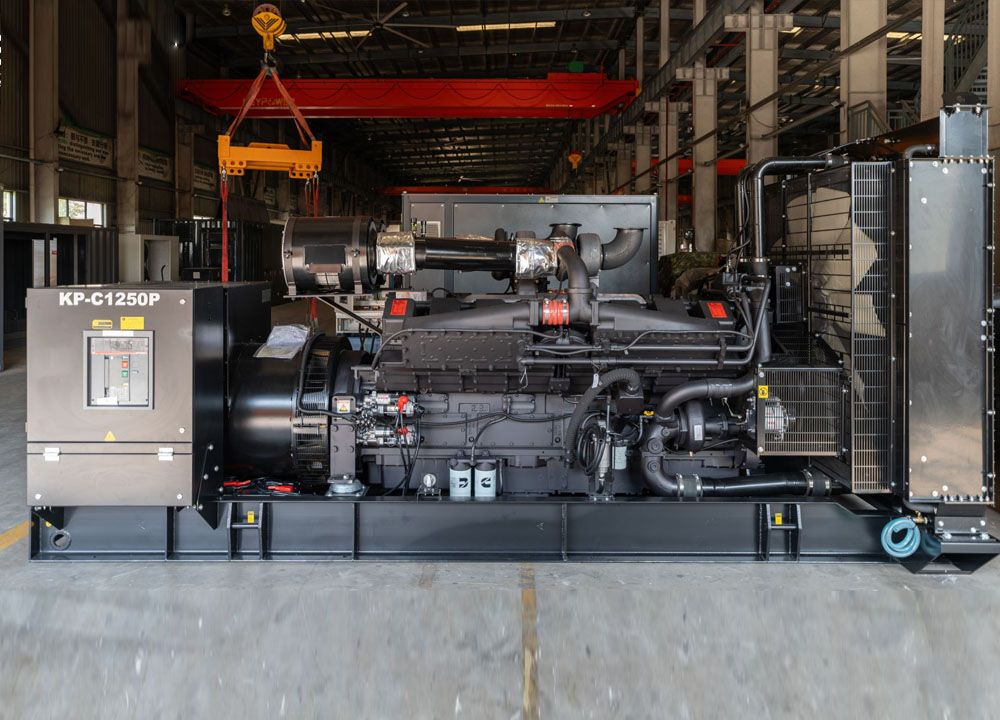How to Improve the Efficiency of Diesel Generators?
May 22, 2025
Improving the efficiency of diesel generators requires a multifaceted approach involving technical optimization, maintenance management, and operational adjustments. Below are key measures:

Optimize Combustion Efficiency
1. Ensure Fuel Quality
- Use high-purity, low-sulfur diesel to prevent injector clogging or incomplete combustion.
- Regularly inspect and replace fuel filters to block contaminants from entering the combustion chamber.
2. Adjust the Fuel Injection System
- Calibrate injector pressure and timing to ensure optimal fuel atomization.
- Adopt advanced technologies like high-pressure common rail fuel injection systems (e.g., electronically controlled injection) to enhance combustion.
3. Optimize Air-Fuel Ratio
- Use turbochargers or superchargers to increase airflow and oxygen concentration for complete combustion.
- Install intercoolers to reduce intake air temperature and improve air density.
4. Regularly Remove Carbon Deposits
- Clean carbon buildup in the combustion chamber, piston crowns, and valves to minimize heat loss and friction.
Reduce Mechanical Losses
1. Minimize Friction Losses
- Use low-viscosity, high-performance lubricants and replace them periodically.
- Ensure proper lubrication of moving parts (e.g., crankshaft, bearings, and connecting rods).
2. Optimize the Transmission System
- Check alignment and tension of belts, gears, and other transmission components to reduce energy waste.
- Avoid loose or misaligned mechanical connections between the generator and load.
Waste Heat Recovery
1. Waste Heat Power Generation (Cogeneration)
- Install exhaust gas turbochargers to harness exhaust energy for additional power generation.
- Recover waste heat using exhaust heat boilers (WHR) or Organic Rankine Cycle (ORC) systems.
2. Thermal Energy Reuse
- Utilize heat from coolant or exhaust for heating, hot water supply, or industrial processes to improve overall energy efficiency.
Smart Control and Load Management
1. Adopt Electronic Control Systems
- Use electronic control units (ECUs) to dynamically adjust engine speed and fuel injection based on load variations.
- Implement smart controllers to maintain optimal air-fuel ratios and combustion parameters.
2. Optimize Load Distribution
- Avoid prolonged low-load operation (below 30% of rated capacity), which significantly reduces efficiency.
- For fluctuating loads, parallel multiple generators and activate them as needed to maintain high-efficiency ranges (70-85% load).
3. Power Factor Correction
- Install capacitor compensation devices to reduce reactive power losses and improve electrical output efficiency.
Regular Maintenance and Upgrades
1. Critical Maintenance Practices
- Replace air, oil, and fuel filters regularly.
- Check cylinder compression pressure and ensure valve sealing integrity.
- Calibrate fuel injection timing and ignition timing (for specific models).
2. Technology Upgrades
- Upgrade to high-efficiency turbochargers or variable geometry turbos (VGTs) for better airflow.
- Replace generator windings with advanced materials (e.g., superconductors) to reduce electrical losses.
- Consider hybrid systems (e.g., diesel-battery) to power low loads via batteries.
Environmental Adaptations
1. Altitude and Temperature Compensation
- Adjust turbocharger parameters or use higher-capacity turbochargers in high-altitude regions with thin air.
- Enhance cooling systems (e.g., larger radiators) in high-temperature environments.
2. Reduce Parasitic Loads
- Turn off non-essential auxiliary equipment (e.g., redundant lighting or control systems).
Alternative Fuels and New Technologies
1. Biodiesel or Synthetic Fuels
- Certain biodiesel blends (e.g., B20) can improve combustion efficiency but require engine adjustments.
2. Hydrogen-Assisted Combustion
- Blend small amounts of hydrogen with diesel to accelerate combustion and reduce emissions.
Monitoring and Data Analysis
- Install sensors to monitor real-time parameters like fuel consumption, temperature, and pressure.
- Use IoT platforms to analyze data, predict failures, and optimize operational strategies.